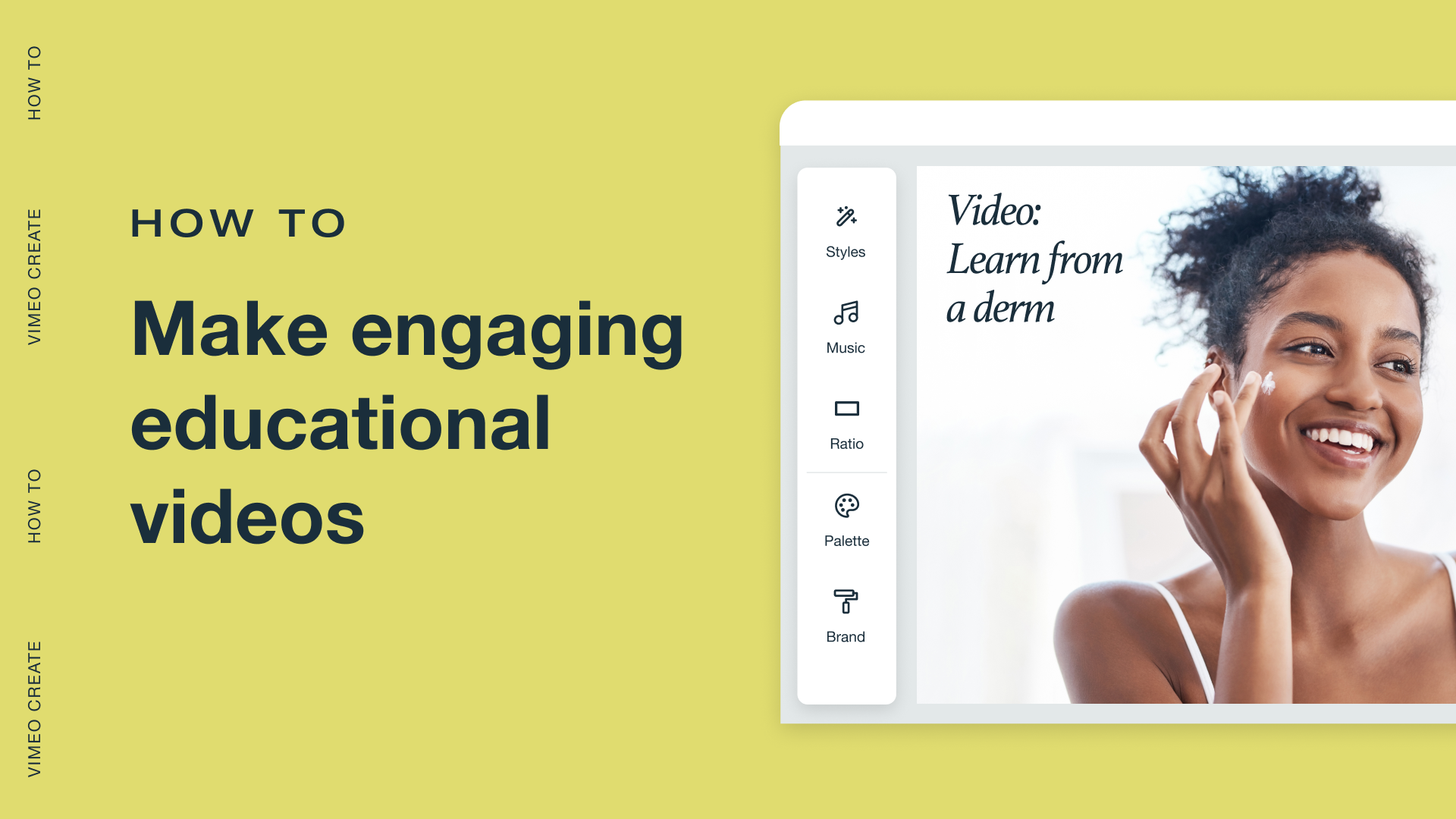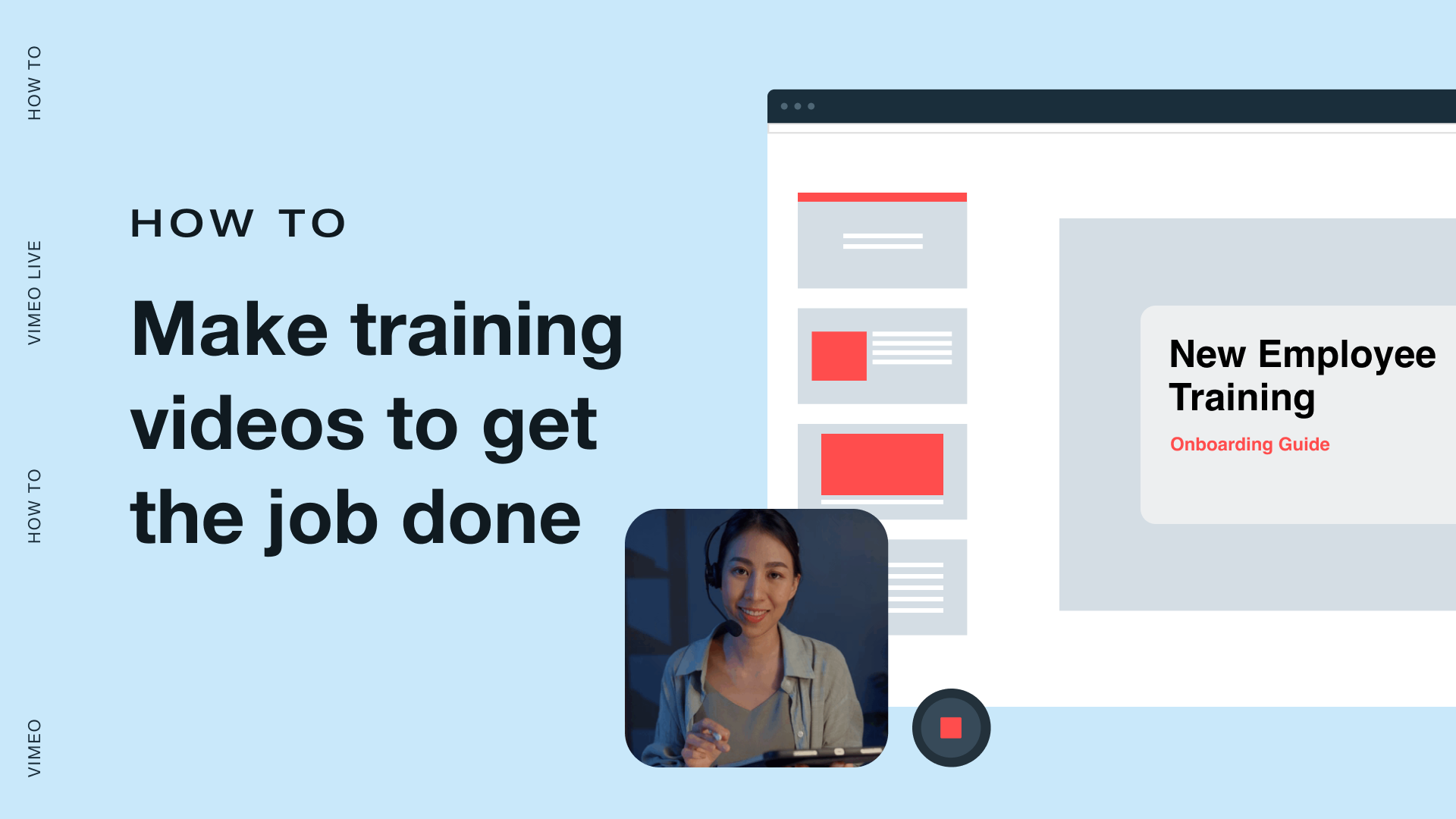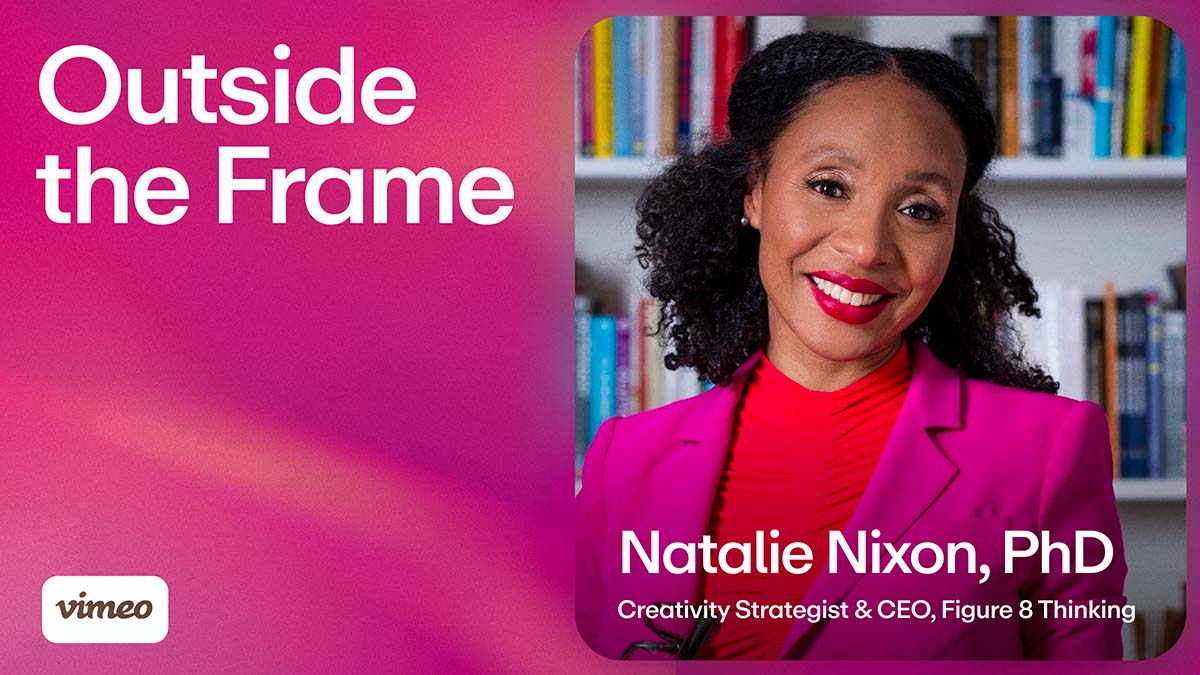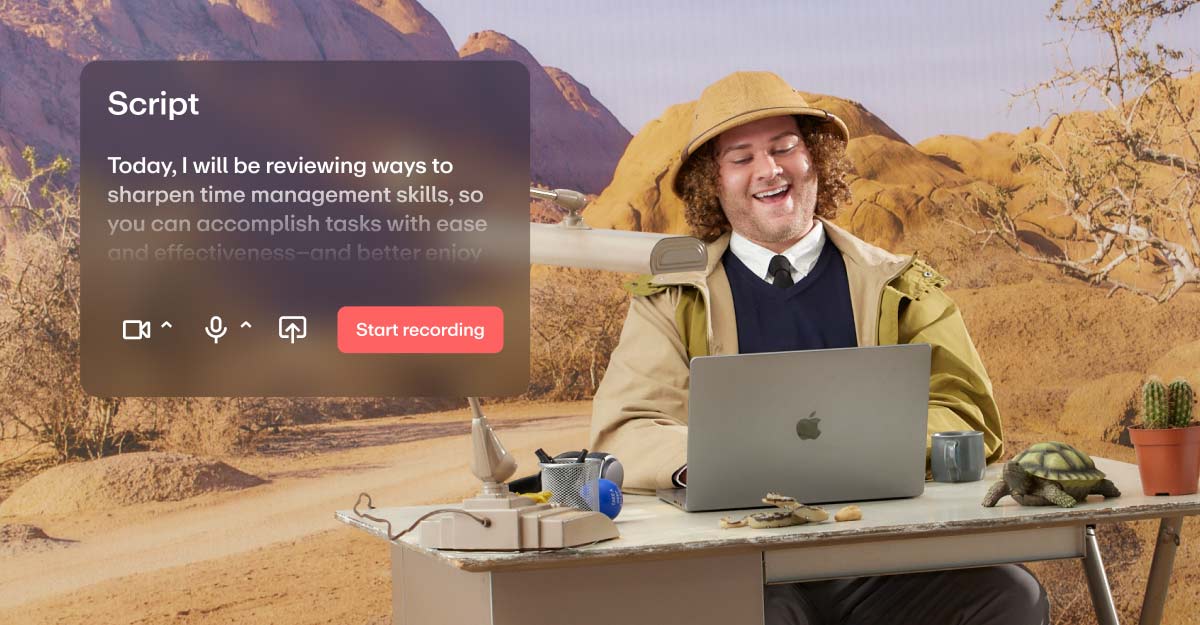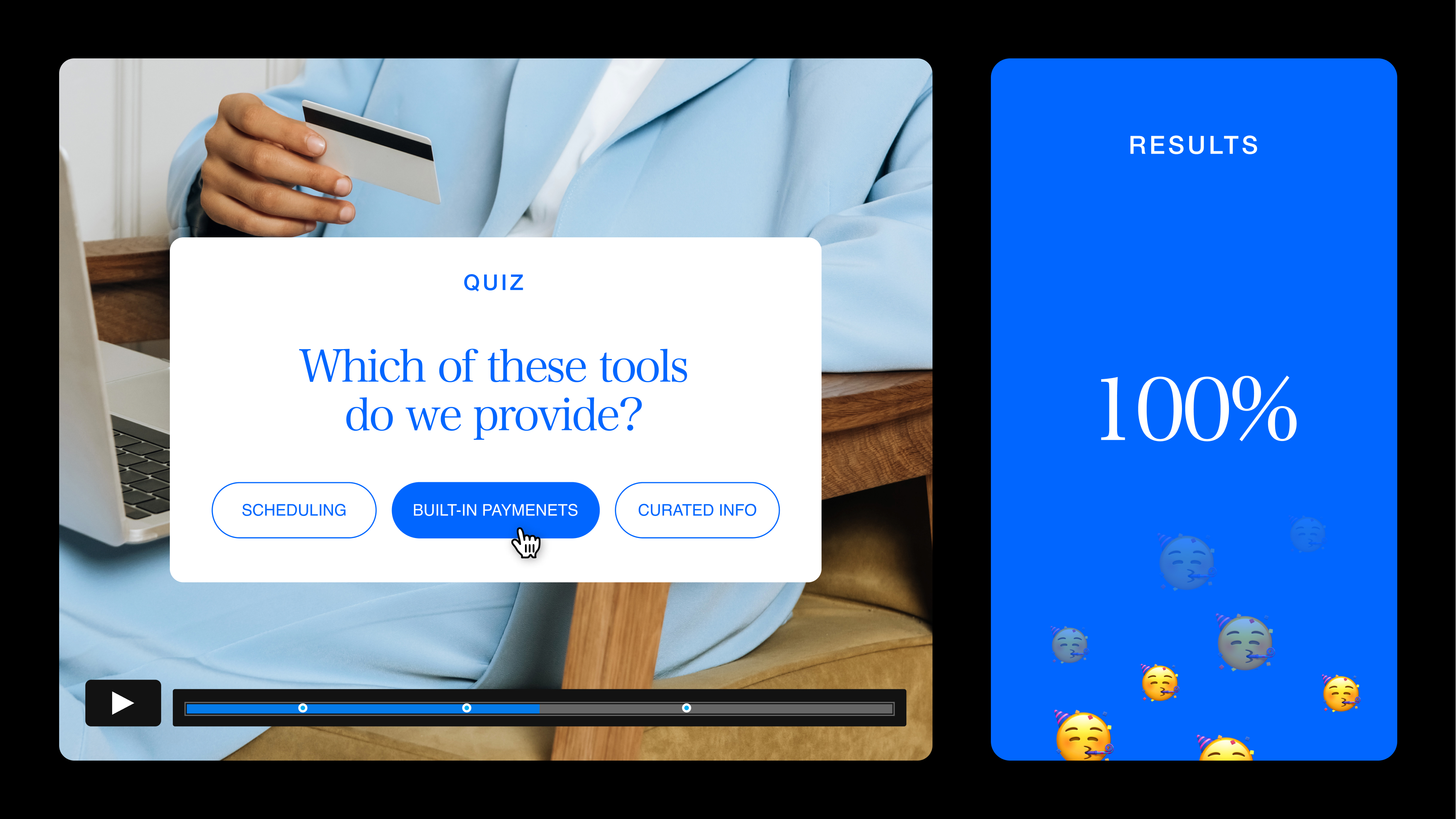With in-person sessions often lacking flexibility and digital-only solutions feeling impersonal and disengaging, finding and implementing the correct training method for your organization can be challenging. Blended learning, or hybrid learning, is a strategic approach that combines the structure of face-to-face instruction with the convenience of online tools.
For example, learners might watch a short video lesson or complete a quiz online before attending a live workshop to apply what they’ve learned. In the classroom, instructors might focus on discussion and hands-on activities, building upon the foundational content delivered digitally. This model allows for personalized pacing, makes better use of face-to-face time, and leads to stronger knowledge retention.
Read on to explore what blended training is and how to structure a successful blended training program using tools like Vimeo.
What’s blended learning?
Blended learning is a model that combines two core elements: traditional lectures (such as live classroom sessions or face-to-face workshops) and digital learning (like video lessons, e-learning modules, or quizzes).
This approach allows organizations to deliver flexible and engaging experiences tailored to the learner’s preferred format. By blending synchronous instruction with asynchronous content, companies can reinforce knowledge more effectively and increase training accessibility across different departments and locations.
For businesses, blending teaching and learning is for more than just convenience — it’s an innovative, flexible way to build learning programs that scale.
Blended learning: 5 models every business should know
Choosing the right blended learning model is key to aligning your training efforts with employee needs and business outcomes. Here are five commonly used models that work particularly well in professional settings.
1. Face-to-face driver model
This model is led primarily through in-person instruction, with digital tools supplementing the content. It’s ideal for businesses that use hands-on training for safety certifications but want to provide additional digital resources for review and support.
2. Online driver model
In this setup, the learning experience happens mostly online. Learners access video modules, complete quizzes, and participate in discussion boards independently, with occasional live check-ins or coaching calls. This model is well-suited for remote teams or asynchronous learning initiatives, where employees can’t always meet in person.
3. Rotation model
With this method, employees alternate between different learning environments, such as instructor-led sessions, self-paced video lessons, and group activities, all on a set schedule. This model works well for long-term onboarding or leadership development programs due to its flexibility and customization.
4. Flipped classroom model
The flipped classroom model reverses typical learning methods. Employees first watch recorded lectures or content online, then attend live sessions to apply what they learned through role-playing or discussion. This approach is effective for skill-building workshops and customer service training because it prioritizes in-person engagement.
5. Flex model
This highly customizable model allows learners to access content on demand, with support from coaches or instructors when needed. Businesses with large, distributed teams often favor this model for its autonomy and scalability.
Each of these types of blended learning supports different levels of learner independence and offers businesses the flexibility to design learning strategies that fit real-world conditions.
Explore Vimeo’s L&D solutions →
Blended learning benefits
Adopting a blended learning solution has a wide range of benefits for organizations that want to modernize and scale their training programs:
- Enhanced learner engagement: Combining video, live sessions, and interactive tools makes the experience more dynamic and memorable.
- Stronger comprehension: Repetition across formats reinforces concepts, improving retention and real-world application.
- Comprehensive analytics: Learning management systems (LMSs) allow for better progress tracking for insights into learner performance.
- Theory meets practice: Employees can watch a concept online and then apply it in a face-to-face or group setting to reinforce skills.
- Facilitates corporate training feedback: Real-time polls, surveys, and quizzes help HR teams identify gaps and refine content.
- Cuts costs and improves ROI: Fewer travel requirements and more flexible content delivery reduce expenses.
With a blended learning approach, businesses can build, deliver, and track compelling educational experiences that provide learners with all the information they need to succeed.
Explore video education solutions →
Creating a blended learning program
A well-designed blended program aligns employee needs with business outcomes. Here’s how to implement one.
Set your learning goals
Start by identifying what success looks like. Are you onboarding new hires, upskilling sales teams, or offering compliance training? Clear objectives help shape your content and choose your delivery format.
Choose a blended learning model
Select the learning model that fits your audience and training objectives. A flipped classroom works well for hands-on sessions, while the flex model supports self-directed learning for remote teams.
Get the right tools to create and deliver content
Invest in a reliable LMS and choose a video platform to host and deliver high-quality learning content. Vimeo allows you to embed videos directly into your LMS, track learners’ progress, and organize content into courses or collections.
In addition, Vimeo Streaming offers advanced options for packaging multiple videos as on-demand courses or paid learning paths. Businesses can curate collections of training content for specific teams or departments, deliver them through subscription models, or gate content for compliance and certification purposes.
Upload your videos to Vimeo today →
Examples of blended learning in action
Many businesses use blended learning to make a significant impact on their organization. Some standout examples include:
- Intel: This tech hardware company developed a blended learning program to train internal teams on new technologies. They combined in-person workshops with self-paced video modules hosted on a custom platform, improving engagement.
- Boeing: This aerospace parts manufacturer sought to enhance team leader training by reducing classroom time. They implemented a blended learning solution that included eight web-based training lessons to be completed before a four-day live course. This format allowed participants to build foundational knowledge online and practice critical skills before attending face-to-face sessions.
Leverage your blended learning program with Vimeo
Vimeo videos can be easily embedded into e-learning courses within any LMS, making them accessible, engaging, and easy to navigate. In enterprise organizations that use a blended learning model, employees can watch assigned content within the same systems they use for quizzes, feedback, and assignments.
Vimeo’s tools make creating immersive, video-powered programs easy. With Vimeo, learning and development professionals gain a flexible, scalable solution that enhances the learner experience while maintaining control over privacy, branding, and analytics.
Ready to modernize your corporate training? Try Vimeo’s learning and development tools to create smarter, scalable learning experiences.
